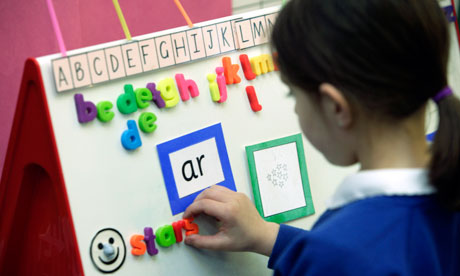By the end of June all Year One pupils would have completed their Phonics Progress Test and now the media furore over the use of non-words has died down, teachers have had the chance to see how confident their pupils are with decoding familiar and unfamiliar words.
With an 80% pass mark, the benchmark is set quite high, especially if some of the children are fazed by the non-words but all is not lost if the pupil doesn’t make the grade the first time round. There’s the opportunity for Year 2 children to take the test again after concentrated work on their phonics capabilities. Until now the difficulty has been finding suitable material to use for teaching and learning or that budgets had already been decided before such material became available.
There’s plenty of material for children in Reception and Year 1 in the lead up to the Phonics Progress Test but less so to help those who need to resit the test.
The difficulty in Year 2 is that much of the reading material from Reception and Year 1 had a low interest level for older children and as such, resistance was seen amongst pupils who were bored with the material.
In September, Collins launched their Collins Big Cat Phonics Progress series which is has reading ability levels of 4-5 but with content aimed at 6-7 year olds. Whilst few non-words are introduced – only in names, the children can get accustomed to these through other activities.
Each year the Oxford English Dictionary adds dozens and sometimes hundreds of new words to its pages. There are still many things, actions and describers that don’t have names and these can be named in class with non-words. Imagine perhaps the crimped ring that holds a rubber onto a pencil; the black mark on the side of your hand when working in pencil or the spot of light on the walls or ceiling, reflected off a shiny surface, a ruler or a watch.
Ask the children to say what they are called in a single word. If they come up with a real word, try to counter it by defining its synonyms and say you want a unique word. Ask the class how they might think the new word is spelt and for the more able, ask them which rule they used to form the sound and if there’s an alternative.
The use of real but unfamiliar words can also help and they needn’t be polysyllabic. Use words like ‘mote’ – the tiny bits of airborne dust; ‘adit’ – the start of a mime or ‘ped’ – a naturally formed mass of soil. Extending this you will be introducing new vocabulary whilst also practising the phonics.
You can also play a version of ‘Countdown’ where, by giving the children a differentiated number and range of letters, they make words of their own using recognised phonic patterns.
Learning or revising phonics needn’t be dull. With the Collins Big Cat Phonics Progress range and some imagination, the pupils will be crying out to do more.




